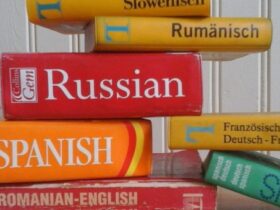This time of yr, parents and guardians throughout Minnesota are beginning to identify which college to send their youngsters to next fall. Among the developing number of picks are language immersion training applications wherein college students analyze the usual college curriculum through a 2nd, overseas, background or indigenous language and English. With about 70 immersion and dual-language packages in Minnesota — about a third of which began in the ultimate decade — more dads and moms chose this approach to school.
Diane J. Tedick with the University of Minnesota’s College of Education and Human Development explains what twin language and immersion education is, what dad and mom want to recognize as a good way to make selections for their youngsters, and how research shows advantages past understanding another language.
Q: What is language immersion schooling?
Prof. Tedick: Language immersion schooling is a school-primarily based application wherein college students study the same old school curriculum via a 2nd, overseas, historical past, or indigenous language. They additionally learn a few subjects in English. At least half of the curriculum must be trained in the second language to be considered an immersion application.
There are four different styles of language immersion applications:
Overseas language immersion for youngsters who speak English at domestic; two-way or twin language applications serve each English audio system and audio system of the partner/minority language (e.g., Spanish); developmental bilingual programs target children who speak a non-English language at domestic, consisting of Spanish; indigenous immersion packages try to revitalize endangered Native languages, which includes Dakota and Ojibwe.

Q: What are the blessings of language immersion education?
Prof. Tedick: When college students talk in or more languages, their lives are, in my opinion, enriched as they expand new perspectives and are available to understand cultural nuances. Having a high degree of bilingualism and biliteracy also can improve an individual’s competitiveness within the job marketplace and open up new career opportunities. Some research additionally points to crucial cognitive blessings associated with bilingualism. It’s hypothesized that the more the level of bilingualism attained, the greater the mental benefits.
A delivered gain for college kids who communicate a non-English language and kids with indigenous ancestry is improving positive identities with their home or Native cultures and most of the people’s subcultures. Research affirms that they do in addition to or better academically than friends who’re schooled only via English. They are likelier to live in the faculty and pursue higher education. Knowing their home or ancestral language lets them preserve strong connections to households and groups, promoting a sense of properly-being and self-esteem.
Q: Do college students fall behind in English, analyzing, writing, and different topics if taught in a foreign language?
Prof. Tedick: Over five decades of studies in the U.S., Canada, and different global contexts confirm that immersion students do as well as or better on standardized academic success exams than friends best schooled in one language. In the U.S., those exams are administered in English. English-talking college students in incredibly in-depth programs that provide 90-one hundred percent of practice in the non-English language at some stage in the early years may enjoy a lag in English language arts first of all. However, that lag is transient; the lag disappears as soon as English is officially added to the curriculum.
Research shows that college students whose domestic language isn’t always English capture academically to their English-talking peers generally use grades 5 or 6. For non-local English speakers, examining their home language is essential regarding their instructional fulfillment and their talent and literacy improvement in English. This is an equal case for college students who have indigenous ancestry. Parents, software administrators, training officers, and policymakers should consider that delays at the outset are typical. However, these delays will not affect the long time of gaining knowledge. On the contrary, the longer those college students are inside the software, the higher they do academically in English.
Q: Are there any challenges associated with immersion schooling?
Prof. Tedrick: One of the best demanding situations is having students reach excessive degrees of bilingualism and biliteracy, especially in U.S. Applications, as English surrounds us and has emerged as an international language. Although many students expand the potential to speak in the non-English language with a high diploma of self-belief and develop the near-local ability to understand and examine in maximum languages, it’s not authentic for all languages. For instance, it’s tougher for immersion students to develop Mandarin literacy abilties.
Research indicates that immersion college students sometimes struggle with the grammar and vocabulary of their 2d language. They can also have an issue with sociolinguistic appropriateness (i.e., interacting in socially and culturally suitable ways) even as speaking in their 2nd language. There must be considerable cognizance of language improvement in immersion and twin language applications. Other challenges include locating tremendously proficient and qualified instructors — particularly those who have the specific understanding and teaching skills that can be wished for immersion. Our programs at the University of Minnesota are designed to train instructors for language immersion lecture rooms to meet the developing want for qualified instructors.
Q: What sources and help are needed for mother and father interested in mastering more approximately immersion opportunities?
Prof. Tedick: Minnesota boasts dozens of PreK–12 immersion and dual-language packages. The University of Minnesota is lucky to have the Center for Advanced Research on Language Acquisition (CARLA). CARLA’s internet site provides a wealth of sources on immersion training for involved mothers and fathers and other stakeholders. There is a segment especially committed to family/figure schooling. It gives an internet repository of useful resources for households who wish to deepen their immersion and dual-language education information. Another precious useful resource is the non-income organization Minnesota Advocates for Immersion Network (MAIN).
MAIN provides a structure for ongoing collaboration with the various country’s immersion packages and immersion specialists in the University. The website affords a modern-day listing of immersion packages in Minnesota and other assets. Diane Tedick is a professor of 2d language training within the Department of Curriculum and Instruction at the University of Minnesota College of Education and Human Development. She has labored in dual language and immersion schooling for nearly forty years as an instructor, researcher, and instructor educator. Her studies interests consist of immersion student language development and twin language and immersion training instructor improvement.














